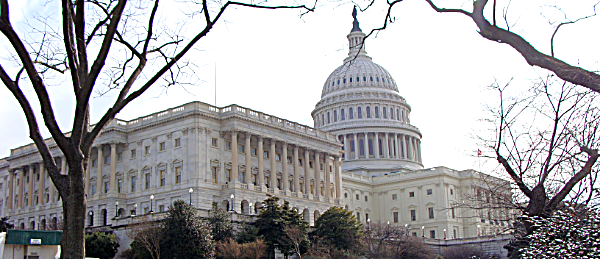- By New York State Comptroller's Office
- News
 Print
Print 
Major changes to the federal tax code being considered by the President and Congress would have significant implications for New Yorkers, including the elimination of the more than $67 billion in state and local tax deductions reported by New Yorkers on their federal taxes, according to a report released Wednesday by State Comptroller Thomas P. DiNapoli.
"The stakes are high for New Yorkers if these changes are made to the federal tax code,"DiNapoli said. "There is a distinct possibility that President Trump's plan will hurt New York's middle class taxpayers and working families and give a windfall to the wealthiest among us. We really need more clarity on the specifics of the plan to fully assess its impact on New York."
Among proposals with important ramifications for New Yorkers, the White House aims to eliminate itemized deductions other than those related to charitable contributions and homeownership. The federal deduction for state and local taxes, which has been part of the federal income tax since its inception in 1913, would be eliminated. This could significantly impact New Yorkers because:
- New Yorkers reported $47.3 billion in itemized deductions for income taxes and $20.2 billion for property taxes in 2014, representing 13.5 percent of all state and local tax deductions nationwide.
- The average amount of total itemized deductions for New Yorkers claiming them was nearly $36,000 in 2014, more than any other state and nearly a third higher than the national average.
DiNapoli's report provides information on itemized deductions for all of New York's counties, noting that on a regional basis, downstate taxpayers are more likely to itemize their federal deductions than their upstate counterparts.
The report found that:
- In Putnam and Nassau counties, more than half of taxpayers itemized such deductions in 2014, the highest proportions in the state.
- Counties where more than 40 percent of taxpayers itemized included Suffolk, Westchester, Rockland, Richmond, New York (Manhattan) and Dutchess, reflecting higher average incomes and higher property tax bills in the downstate region.
- Among taxpayers who itemize in the state’s 62 counties, those in Manhattan claim the highest average amount of deductions, at just over $85,000 per taxpayer.
- The lowest proportion of itemizers tend to be concentrated in the North Country and Western New York.
The administration's tax plan includes a proposal to double the standard deduction, which was first enacted in 1944 to simplify the calculation of the personal income tax for many taxpayers by eliminating the need to calculate itemized deductions. As of 2017, the standard deduction is $12,700 for married, joint filers; $9,350 for heads of households; and $6,350 for single filers.
DiNapoli’s report notes that:
- Over two-thirds of taxpayers nationwide and nearly the same proportion in New York claim the standard deduction, primarily reflecting taxpayers with lower incomes. Doubling the standard deduction could benefit certain taxpayers who currently itemize their deductions if the new standard deduction is higher than their potential itemization.
- Taxes for millions of lower- and middle-income taxpayers in New York could be lowered as a result of this change.
The effect of other components of the administration's plan are murkier. The administration seeks to reduce the number of tax brackets from seven to three, with rates of 10 percent, 25 percent, and 35 percent. New York has a comparatively high number of taxpayers in the top bracket who could benefit from the change, accounting for almost 10 percent of the nationwide total in 2014. However, the impact on taxpayers in the other tax brackets is unclear, as the administration's plan does not detail the income thresholds where these new brackets would apply.
The administration's plan also would repeal the AMT, a supplemental income tax on certain taxpayers, impacting 4.2 million taxpayers nationally and over 480,000 in New York, second only to California. While a repeal of the AMT alone could result in a federal tax cut for these taxpayers, it remains unclear how this proposal would interact with the proposed elimination of most itemized deductions and other potential tax changes, leaving the overall result on taxpayers uncertain.
New York's share of total federal income tax liability in 2014 was 9.1 percent, compared to the state's 6.1 percent share of U.S. population. Whether the administration's plan would change that proportion, or increase or decrease federal taxes for individual New Yorkers, will depend on the overall interaction of any provisions ultimately enacted. Such changes could also affect state tax revenues, as state tax law uses federal definitions of income and deductions for the purposes of calculating tax liability.
The proposed tax law changes could impact federal, state and local government budgets as well as individual New Yorkers. The bottom line for taxpayers will not be known until a more detailed plan emerges from Washington.
v13i27



